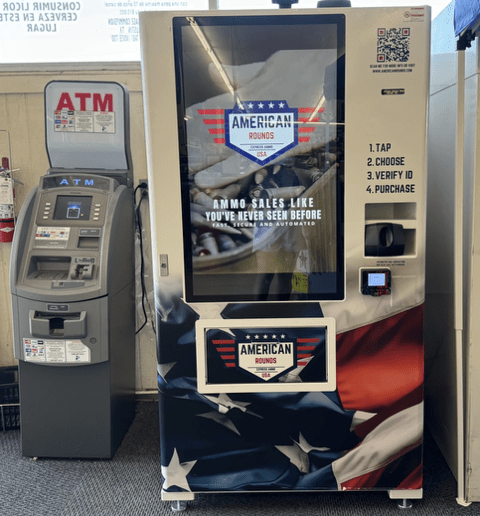Your team created a new invention, say, for a vending machine that dispenses bullets.* The patent law requires that the name of each “inventor” be listed in the patent application and the inventors’ names are included on the issued patent. Being an inventor on a patent can be a huge feather in the cap of an employee.
Identifying Inventors
So, who among your team are the “inventors?” Is it the owner of the company who identified the problem to be solved but did not otherwise participate? Is it the remote employee who worked independently on a tiny part of the invention? Is it the draftsperson who prepared the drawings or the model maker who built the prototype?
How about all the people who tossed around ideas over the water cooler? How about the consultant who explained the physics of the invention or the prior art? How about team members who contributed ideas that did not make it into the patent application? How about the artificial intelligence that came up with alternative designs?
Key Takeaways for AI-Assisted Inventions
The USPTO has issued guidance to its patent examiners on, among other things, how to deal with who is an inventor and with inventions that are created using artificial intelligence. Here are key takeaways:
- An ‘inventor’ is a human being who “contributed to at least one claim” of a patent; namely, a person who “contributed to the conception of the invention.” Identifying a problem to be solved, without more, is not enough. In our example above, the company owner did not contribute, so he or she is NOT an ‘inventor.’
- Where more than one person contributed to the invention, then everyone who “shares in the conception” of the invention is a “joint inventor” and must be named. Multiple persons may be ‘joint inventors’ even though they did not work together, did not work at the same time, did not make the same amount of contribution, and did not contribute to every claim of the patent. BUT each ‘joint inventor’ must contribute in a ‘significant manner’ to the invention. In our example above, your team members, including the remote employee and the water cooler employees, MAY BE joint inventors, even though they worked on different parts of the invention provided that each made a ‘significant contribution’ to the ‘conception’ of the invention.
This raises several questions.
What’s a ‘significant contribution’ to the ‘conception’ of the invention? Here’s what the USPTO says that ‘significant’ means: The inventor must “contribute in some significant manner” or make a contribution that “is not insignificant in quality” and “do more than to explain to the real inventors well-known concepts and the current state of the art.” The USPTO’s definition of ‘significant’ is exceptionally fuzzy because it incorporates the defined term. Nonetheless, in our example above, it’s enough to knock out the consultant who explained the physics and prior art – the consultant of the example is NOT an ‘inventor.’
So, what is ‘conception’ of an invention? The USPTO says that there must be a “contemporaneous recognition and appreciation” of the invention by at least one person for “conception” to occur. An accidental discovery that no one recognizes as an invention is not ‘conception.’ Someone (but not all the joint inventors) must recognize that the invention is an invention.
According to the USPTO, each joint inventor must have significantly contributed to the “definite and permanent idea of the complete and operative invention as thereafter applied practice.” As applied to our example, we may infer that team members who contributed to alternatives that do not make it into the patent application are not ‘inventors,’ and neither is the model maker who made the prototype or the draftsman who prepared the drawings.
Can AI be an Inventor?
Which brings us to the contributions of artificial intelligence.
As noted, inventors must be human beings. An artificial intelligence cannot be a listed inventor. BUT a human being can use artificial intelligence to create an invention so long as the human being “contributed significantly” to the AI-created invention.
So, how much human contribution is required?
The USPTO says this area is indefinite and no clear boundaries are visible yet, but gives some examples of what may and may not be acceptable. The USPTO says that a bare problem presented by the human to the AI is not a significant contribution by the human, but that a query that guides the AI MAY BE adequate.
A human who recognizes an output of an AI as an invention is not an inventor, but a human who takes the invention created by the AI and subsequently contributes to that invention MAY BE an inventor. A person who builds and trains an AI to develop a particular solution MAY BE an inventor of the solution then developed by the AI. Finally, ownership or operation of the AI, without more, does not make the owner or operator of the AI an inventor of any invention created by the AI.
One thing’s for sure – we’re going to see a lot more inventions created using AI in the future.
*This is only an example of an invention. This is not to suggest that there is any question of inventorship for the bullet vending machine.
Robert Yarbrough, Esq.


